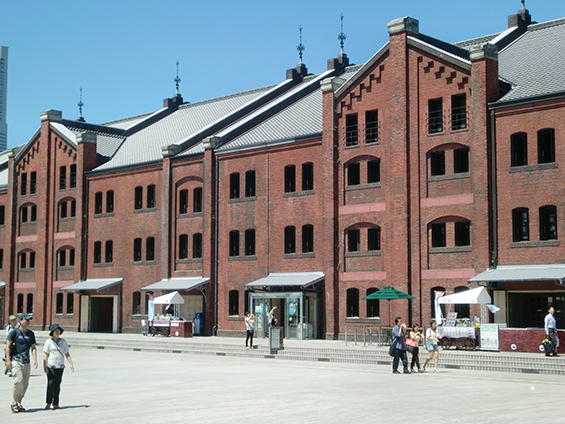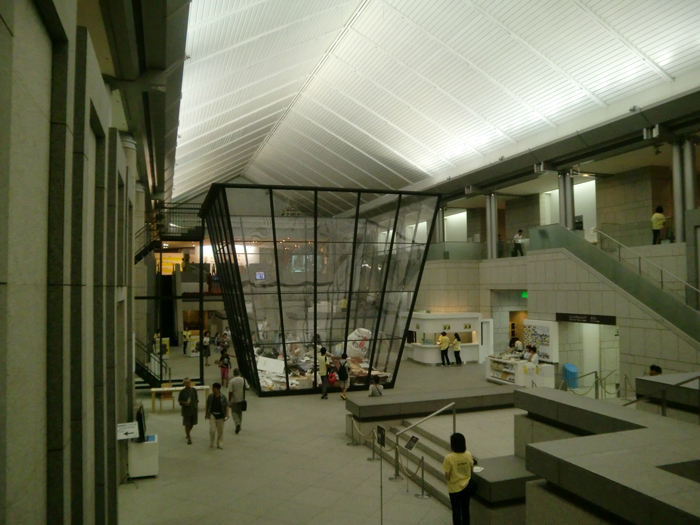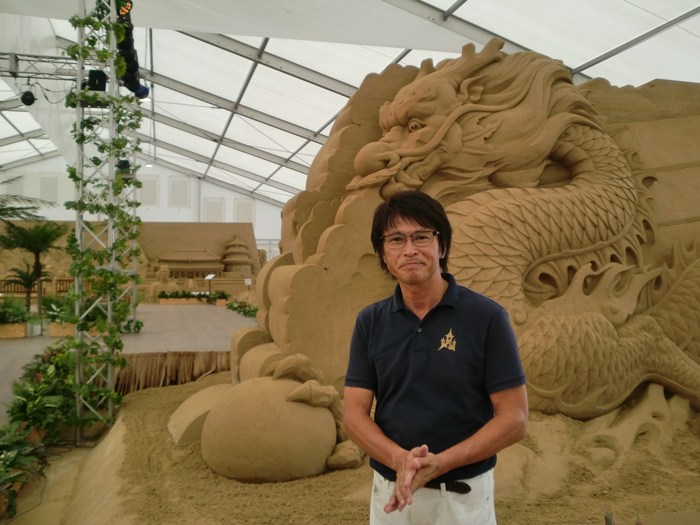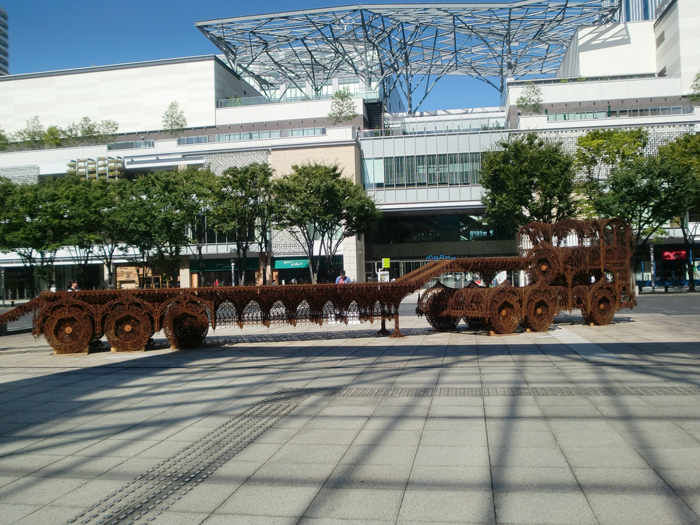
JAPAN SHOWCASE|Yokohama City
Yokohama events demonstrate respect for others’ culture, history
by Chiho Iuchi Staff Writer
Yokohama has been holding a variety of events this year as one of the host cities in the yearlong “Culture City of East Asia 2014” project.
The idea of enhancing cultural exchanges among Japan, China and South Korea was agreed on at the ministerial level in 2011. In September 2013, prior to launching the project, the culture ministers of the three neighbors met in the South Korean city of Gwangji and designated one East Asia City of Culture in each country. The cities are Yokohama, a historic port city known for its international exchanges and atmosphere; Quanzhou, an ancient trading port in China’s southern Fujian province; and the South Korean city of Gwangju, known for hosting the prestigious Gwangju Biennale contemporary art festival since 1995.

This year, the three cities have been serving as the principal venues for a series of cultural and art exchange programs to enhance mutual understanding and encourage a sense of unity within the three neighbors, whose ties have been increasingly strained over severe territorial disputes and conflicting interpretations of historical issues.
In Yokohama, the project is being carried out based on the concept of the city’s new collaborative and creative power.
One of the events held in August in Yokohama was the East Asia Youth Ballet Week, which featured young ballet dancers from the three countries, organized in collaboration with the Yokohama Arts Foundation.
Twelve young dancers from renowned ballet schools from Japan, China and South Korea spent a week in Yokohama, taking intensive master classes and performing at Yokohama Red Brick Warehouse, a Yokohama port icon, while participating in cultural activities such as a Japanese tea ceremony workshop and an excursion to the Yokohama Triennale 2014.
Tracing its origins to Western Europe, ballet has spread to all corners of the globe and remains a highly respected art. While preserving their own traditional culture, Asian countries have embraced the art of ballet and have further cultivated it. Today, Asian dancers are held in high esteem worldwide.
In the master classes, the young dancers had the unique opportunity to receive instruction from top-class teachers from ballet schools in each of the three countries.
“During each master class, we discovered the differences in our teaching methods, including various strengths and limitations,” said Megumi Nakamura, a leading Japanese ballerina who served as director of the program. “And we recognized that we can learn from one another,” she added, noting that the language of ballet is predominantly French, something that enabled the young students to communicate with one another with little need for translators.

Another collaborative project was the Yokohama Sand Art Exhibition, which took place from mid-July at a site specially set up in the Kita-dori district near Bashamichi Station.
Sculptors specializing in sand art were invited from the three primary countries and others to collaborate in creating large-scale sand sculptures under the direction of Katsuhiko Chaen, one of the few Japanese sand sculpting specialists.
Candidly, Chaen said he was unsure about a collaborative work between the three countries at first, citing the sensitive political situations, but he accepted the challenge, saying, “I believe art is a common language shared among human beings.”
“Once completed, it was my pleasure to have worked on the project,” he said.
“What was most difficult was finding a common theme for us,” explained Chaen, who finally decided to feature some national heroes and UNESCO World Heritage sites from each country.
The site was divided into three zones, with one each dedicated to Japan, South Korea and China.
Entering the main gate, which was guarded by a pair of dragons, visitors first passed the Korean zone, which featured an introduction of the Hangul alphabet, first debuted by Sejong the Great (1397-1450), the fourth king of Joseon.
The Chinese zone had the Great Wall of China and Qin Shi Huang (260?210 B.C.), who ruled as the first emperor (220 to 210 B.C) of the Qin dynasty, which marked the beginning of a united China. Additionally, an impressive army of sand sculpture terracotta warriors, a form of funerary art buried with the emperor, was also on display.
As for Japan, “it was difficult to think of heroes,” Chaen said. Instead, the Japan zone featured Mount Fuji. Also on display was the 1853-54 Perry Expedition, which resulted in the opening of Yokohama Port to international trade and further leading to the Meiji Restoration in 1868 and Japan’s modernization.
For the exhibition, over 1,000 tons of sand was transported from the Tottori Sand Dunes, Japan’s largest coastal dunes in Tottori Prefecture. The artists carved out sculptures from tightly-packed pyramid-shaped blocks of compacted sand.
“Sand has a flexibility no other material has,” Chaen explained. “With sand, we can express fine details of the objects, while at the same time sand allows us to create large-scale landscapes that depict stories.”
Having attracted around 57,000 visitors, the exhibition was slated to run until Nov. 3. Unfortunately, however, it came to a screaming halt on Oct. 7, as the sculptures were severely damaged when the powerful typhoon Phanfone, the 18th of the season, slammed the Kanto area on Oct. 6.

Although the sculptures were not destroyed, it would likely take more than six weeks to repair the damage caused by the typhoon.
Although it is a shame the exhibition had to end, at least the works proved the possibility of expressing respect for the history and culture of others through artistic collaboration, which should definitely be counted as one of the achievements of the yearlong cultural project.
Of course, the prestigious Yokohama Triennale 2014, which is designated as a “Culture City of East Asia 2014, Yokohama Core Project,” is still underway. Under the direction of Japanese artist Yasumasa Morimura, the art event presents works by 65 artists from around the world, of course including those from Japan, China and South Korea. The exhibition is created as a single narrative under the title, “ART Fahrenheit 451: Sailing into the sea of oblivion,” which invites visitors on a voyage to revisit the many things do not stay in the world of memory.


